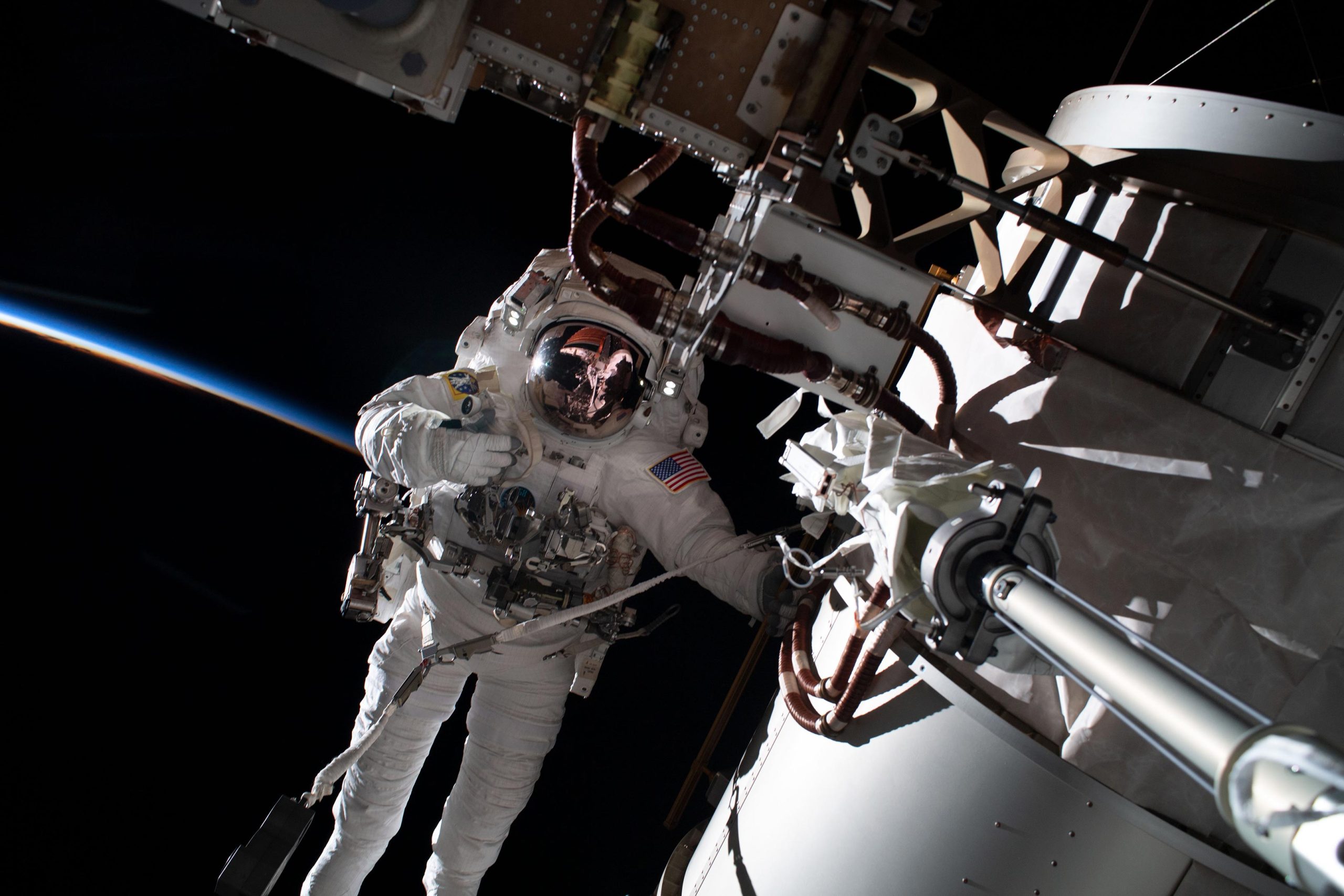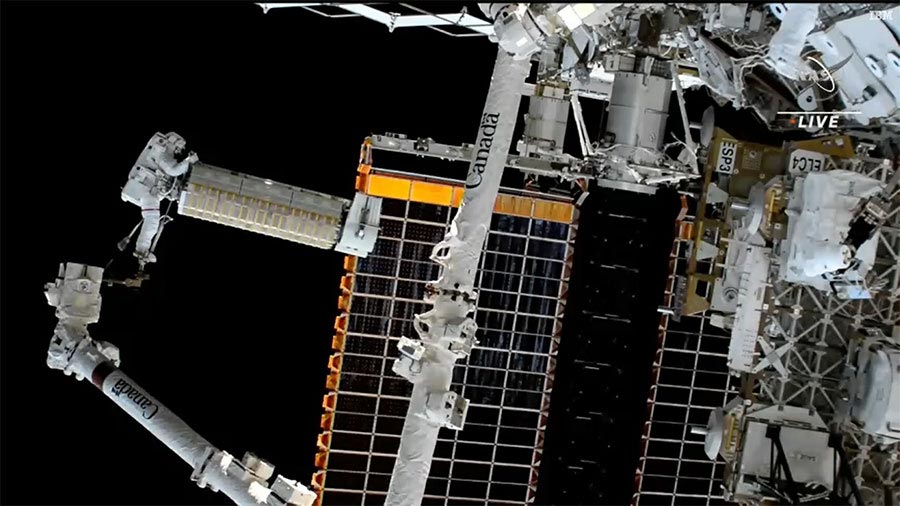Los astronautas de la NASA completan la instalación de un nuevo panel solar en la Estación Espacial Internacional


El astronauta de la NASA Josh Cassada ensambla el brazo robótico Canadarm2 que transporta la matriz solar a su ubicación de instalación en el segmento de la estructura Starboard-4. Crédito: NASA TV
In addition, the duo also completed an additional task to release several bolts for the upcoming iROSA installation on the 4A power channel on the port truss.

NASA astronaut and Expedition 68 Flight Engineer Frank Rubio is pictured during a spacewalk tethered to the International Space Station’s starboard truss structure. Behind Rubio, the last rays of an orbital sunset penetrate Earth’s thin atmosphere as the space station flew 258 miles above the African nation of Algeria. Credit: NASA
During the spacewalk, Cassada was designated extravehicular crew member 1 (EV1) and wore a suit with red stripes. Rubio was designated extravehicular crewmember 2 (EV 2) and was in an unmarked suit.
It was the 256th spacewalk in support of space station assembly, upgrades, and maintenance, and was the second spacewalk for both astronauts. Cassada and Rubio are in the midst of a planned six-month science mission living and working aboard the microgravity laboratory to advance scientific knowledge and demonstrate new technologies for future human and robotic exploration missions, including lunar missions through NASA’s Artemis program.

NASA astronaut and Expedition 68 Flight Engineer Josh Cassada is pictured suited up in his Extravehicular Mobility Unity (EMU), or spacesuit, during a seven-hour and 11-minute spacewalk to ready the International Space Station’s starboard truss structure for future rollout solar array installation work. Credit: Frank Rubio/NASA
The next U.S. spacewalk is scheduled for Monday, December 19, to install an iROSA on the 4A power channel on the port truss. This will be the fourth iROSAs out of a total six planned for installation. The iROSAs will increase power generation capability by up to 30%, increasing the station’s total available power from 160 kilowatts to up to 215 kilowatts.





